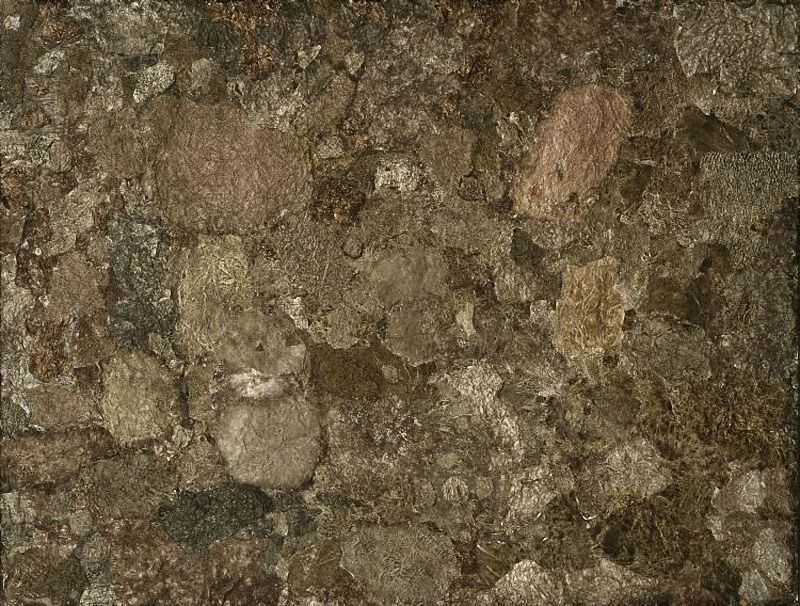
Soul of the Underground exemplifies Dubuffet's fascination with texture and his departure from representational painting. Inspired by the surface quality of Jean Fautrier's paintings, Dubuffet's use of aluminum foil and oil paint creates a coarse, uneven surface resembling mineral deposits. Here Dubuffet completely abandons pictorial representation in order to evoke sheer matter, sheer unprocessed material. It is part of a series of Texturologies that he worked on throughout the 1950s as he became more interested in evoking different sorts of texture.
After the horrible destruction of World War II, mud and dirt is what remained in plentitude. Rather than proclaiming that civilization had ceased, Dubuffet wanted to use the rubble to build anew, and to purify for the future. In addition, the dirt is thought of as a material that has a natural structure that can be discovered, explored, and put to new uses.